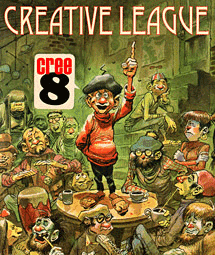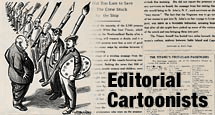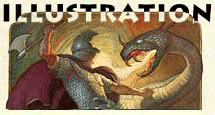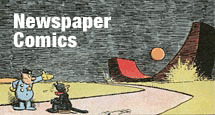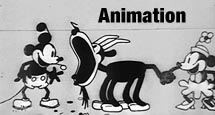This posting is a stub. You can contribute to this entry by providing information through the comments link at the bottom of this post. Please organize your information following the main category headers below….
Birth/Death
Born in 1916 on April 26th in New York City.
Died in 2000 on July 20th 2000
Occupation/Title
American contemporary artist, author and illustrator
Bio Summary
Eyvind Earle has enjoyed a prolific career spanning 60 years.
Eyvind Earle began painting at the age of 10 and the diligent young artist’s work matured so quickly his paintings were exhibited in France by the time he was 13. From the time of his first one-man show in France when he was just fourteen, the artist’s fame has steadily grown. At the age of 21 Earle opened at Charles Morgan Galleries, his first of many one-man shows in New York. The response was so positive that the exhibition sold out and the Metropolitan Museum of Art purchased one of his paintings for their permanent collection. In 1951 Eyvind Earle joined Walt Disney Studios and was responsible for the styling, background and color for Sleeping Beauty.
Early Life/Family
Earle’s father, Ferdinand, was a professional painter who studied with Adolphe William Bouguereau and James Abbott McNeill Whistler. Ferdinand Earle groomed his son as an artist from childhood, undertaking the boy’s education with an old-school emphasis on practice making perfect. At the age of ten, Eyvind Earle’s parents divorced, and his father hauled him off from California, first taking him to Mexico City, then on junkets around Europe. Once abroad, Ferdinand set his son a choice: read 50 pages or paint a picture–daily. Eyvind chose to paint, and the two would work together each day on the same subject. “He never explained anything,” Earle recalls. “I would always finish long before he did, so I would simply stand and watch him for hours.”
By the time the artist was 14, he was good enough to have a public showing in Ascain, a small town in the south of France. “I really had very little talent,” he admits, “but at the time, I was quite conceited. Everybody said ‘ooh’ and ‘ah,’ because no other kid had done hundreds of paintings.”
In 1937, at the age of 21, Earle set out for New York on his bicycle, painting a watercolor on each of the 42 days it took him to cross the continent. Only a year later, the Charles Morgan Galleries held a show of the paintings to critical acclaim, and the gallery continued to show his work each year. In 1940, The Metropolitan Museum of Art bought one of his watercolors for its permanent collection. That painting, entitled Weatherbeaten, depicts a lone farmhouse and a stand of bare trees, with the spring snow beginning to thaw into patches of mud. The scene lacks the visionary quality of Earle’s mature work, but long fingers of shadow and one gaunt tree hint at his later landscapes.
Education/Training
When Earle ran away from his father, using shopping money to buy a train ticket to Paris. With the help of his half-brother, Harold, Earle returned to the U.S., joining his mother in Hollywood. During the next seven years, Earle squeezed through the Great Depression earning nickels after school by painting house numbers on curbs and by taking on chores such as roofing and mixing concrete. The Depression years were interspersed with a few strokes of good fortune, as in 1936 when Grace Tibbet, wife of the opera singer Lawrence Tibbet, offered him $25 a month to go to Mexico and paint for a year. Before receiving this commission, Earle had managed to become, for a time, an assistant sketch artist at the United Artists studio–foreshadowing the years he would spend in the 1950s working for Walt Disney {beginning as a background painter and rising quickly to the position of art director on Sleeping Beauty} and the years after he left Disney to produce, paint, and photograph animated films and commercials with his own company.
Career Outline
Earle has attained critical acclaim from such publications as Time, The Los Angeles Times, The New York Times, The New York World-Telegram, The Art News and The New York Sun.
The Metropolitan Museum of Art, New York, Rahr-West Art Museum, Phoenix Museum of Art and Arizona State University Art Museum have purchased Earle’s works for their permanent collections. For the past 70 years Earle has also had many successful one-man exhibitions throughout the world.
As an illustrator, he has worked as production designer, color stylist and background painter for the Disney animated classics Sleeping Beauty, Paul Bunyan and Lady and the Tramp. American Artists Group has published over 600 of Earle’s designs and sold over 300,000,000 of his Christmas cards during the past 50 years.
Comments On Style
Earle’s command of beautiful, simplified shapes, dominant in each composition, is enhanced by the sensitivity with which he embroiders textual richness and elements of contrasting scale. His freedom of creative concept which carries both artist and viewer into gorgeous lands that never were, All are bathed in liquid-jewel color.
Influences
1.The French landscapist Pierre Henri de Valenciennes once wrote that the greatest artists are those who, “by closing their eyes, have seen Nature in her ideal form, clad in the riches of the imagination.” Earle captures the spirit of his subjects.
2.Ferdinand Eywind,his father.(because he let Earle to choose if he want to read 50 pages or paint a picture)
3.pre-renaissance and gothic art, artists such as Van Eyck, Bruegel and Albrecht Durer, and Persian and Japanese prints
Personality
He pursues beauty.
Anecdotes
Until 1966, Earle had worked with casein on Masonite, a very sensitive medium, but then he began exhibiting and switched to acrylics. “I loved the casein,” he recalls, “but I gave it up because it’s so easy to damage. A fingerprint on it can mar the surface, and there’s no way to get it off. Walking through museums, I see many modern works, by painters who are still alive, that are cracking and chipping. Do these artists think it beneath them to consider the preservation of their work?” Earle extends this concern to his own prints and paintings and is “still trying to perfect the preservation side of my work.” Once, as a test, he tacked a serigraph to an outside wall and left it there in sun, wind, and rain for two years. Then he removed it to scrutinize the inks for fading or leaching and to test the paper for flexibility. The print was still bright and supple. “It’s very important to ensure that a piece won’t deteriorate 50 years later,” he insists.
Miscellaneous
1940 was also the year when Earle began his work with serigraphy. In Stamford, Connecticut, he founded his own Christmas card company, designing the cards and making them himself. At first, he printed by hand from linoleum blocks, then graduated to screen printing as well. “I never had a lesson in serigraphy,” he confesses happily. “I learned by doing the Christmas cards. You go to the store and buy the materials, and you get a little instruction book. It isn’t very complicated.”
Earle’s life of screen printing cards was interrupted in 1943, when he was drafted, but after two years of service, he returned to New York and soon afterward was creating designs for the American Artists Group, a greeting card firm. The company has since sold millions of cards, reproducing over 600 of Earle’s designs.
Filmography
Miscellaneous Crew – filmography
Working for Peanuts (1953) (background artist)
Toot Whistle Plunk and Boom (1953) (background artist)
… aka Adventures in Music: Toot Whistle Plunk and Boom (USA: complete title)
For Whom the Bulls Toil (1953) (background artist)
Peter Pan (1953) (background artist)
Pigs Is Pigs (1954) (background artist)
Grand Canyonscope (1954) (background artist)
Lady and the Tramp (1955) (background artist)
Paul Bunyan (1958) (background artist)
4 Artists Paint 1 Tree: A Walt Disney ‘Adventure in Art’ (1958) …. Himself – Artist
… aka 4 Artists Paint 1 Tree (USA: short title)
An Adventure in Art (1958) (TV) …. Himself
“Disneyland”
… aka Disney’s Wonderful World (USA: new title)
… aka The Disney Sunday Movie (USA: new title)
… aka The Magical World of Disney (USA: new title)
… aka The Wonderful World of Disney (USA: new title)
… aka Walt Disney (USA: new title)
… aka Walt Disney Presents (USA: new title)
… aka Walt Disney’s Wonderful World of Color (USA: new title)
– An Adventure in Art (1958) TV Episode …. Himself









 by
by 





